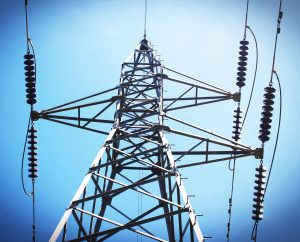What is the Best Renewable Energy for Your Home?


Choosing the best renewable energy for your home is a big decision. Whether you are looking for a clean and green source of energy or you are simply trying to reduce your carbon footprint, there are many different options to choose from. In this article, we’ll explore some of the most popular forms of renewable energy and how they work.
Hydropower
Using water for power is one of the oldest forms of renewable energy. In fact, hydro was one of the earliest forms of mechanical energy in factories. It’s been around for thousands of years and is still used today in a wide range of applications.
Unlike solar and wind power, hydropower has no emissions and produces large quantities of low-carbon electricity. It’s also an affordable energy source. The cost of hydropower ranges from 3 to 5 USC(kWh)-1, which is comparable to thermal power plants. Hydropower plants can ramp up and down quickly, making them ideal for integrating variable renewable sources. It also helps to keep electricity systems stable.
Wind
Using wind as a renewable energy source has been on humankind’s mind for centuries. The energy can be harvested either on land or at sea. The benefits of using wind for renewable energy are numerous. These include reduced CO2 emissions and fewer particulates. The resulting energy can be stored in a battery.
The cost of using wind power is close to conventional utility generation costs. Wind power has the potential to supply over 5 % of global electricity demand by 2020. The International Energy Agency predicts that wind energy could meet 20 % of European demand by 2040. There are also many economic benefits to using wind and solar power. They can generate jobs in local communities and contribute to a sustainable economy. Wind and solar power are also clean energy sources, free of pollutants.
Solar
Using solar energy as an alternative to fossil fuels is a smart move. It can help preserve the Earth for future generations while also reducing harmful pollution. In addition, it can reduce your energy bill in the short and long run. The best part is that solar energy is available anywhere that gets a little sun. This means that you can harness this energy source in the country, on the coast, or in the mountains.
The technology behind producing solar panels has improved tremendously in recent years. New panel designs and recycling processes are making the environmental impact of producing solar panels significantly less.
Biomass
Several government officials and scientists have cited the greenhouse gas benefits of bioenergy. However, the bioenergy industry also has a long list of environmental impacts. Biomass is a renewable resource containing carbon from the sun. It comes from a variety of sources, including agriculture, waste, and forests. It can be converted to energy, liquid fuels, and chemicals. Biomass can also be used to replace fossil fuels.
Biomass can be burned to produce electricity. The steam produced during the firing process powers a turbine. The biomass is heated to 200-320 degrees Celsius. Several industries produce waste that can be used to create electricity. The waste is converted into electricity through a variety of processes, including direct firing, gasification, and anaerobic decomposition.
Photovoltaic
Using solar energy to power your home can help reduce your carbon footprint, save money, and contribute to a cleaner, more sustainable future. A solar photovoltaic system is one of the fastest-growing renewable energy technologies.
Photovoltaic energy is made up of a variety of semiconductor materials. Some examples are copper indium gallium diselenide, silicon, organic compounds, and perovskites. These materials are used to convert sunlight into electrical energy. Solar PV technologies are small, inexpensive, and can be installed almost anywhere. They also have low maintenance and operating costs. Photovoltaic systems are also deployed at large scales to power the electric grid.
Geothermal
Almost inexhaustible thermal energy can be generated from the Earth’s core. In fact, the Earth’s heat is equivalent to 42 million megawatts of power. It is an inexhaustible source of energy that can be used for heating and cooling.
Geothermal renewable energy is becoming an increasingly important source of energy. For example, a geothermal power plant generates electricity by heating water in a geothermal reservoir. The hot water then boils into steam and powers turbines. The vapour is then condensed back into a liquid, which is then recycled. The cycle is closed-loop and produces zero emissions. Geothermal energy can also be used for aquaculture, greenhouses, and even spas. In addition, it has become more economical than conventional heating methods.

